Carbon Tierra Biennale 1
Curated by George Lazoglou
Communication/Promotion: Annita Koutsonanou
Graphic Design: Philippos Vassiliades
Various Locations – Ptolemaida, Greece
International Video Screenings And Performances
27 September – 29 September 2024
Press
■ artfacts.net
■ spititiskyprou.gr
■ cut.ac.cy
■ gr.euronews.com
■ eetf.uowm.gr
■ kilowartplatform.gr
■ prlogos.gr
■ facebook.com/events
■ paideia-news.com
■ archisearch.gr
■ kozan.gr
■ kozan.gr
■ philenews.com
■ neaptolemaidas.gr
■ ertnews.gr
■ tharos.gr
■ e-ptolemeos.gr
■ prlogos.gr
■ e-ptolemeos.gr
■ youtube.com
■ msn.com
■ youtube.com
■ fractalart.gr
■ xronos-kozanis.gr
■ kozan.gr
■ kastoria.news
■ parallaximag.gr
Through their partnership and collaboration, kilowArt platform and Cut Contemporary Fine Arts Lab are presenting the inaugural Carbon Tierra Biennale in Ptolemaida City, Greece. The Biennale is directed by an international multidisciplinary research team and is supported by a group of scientific and artistic advisors from Greece and abroad.
Ptolemaida City, throughout its historical trajectory from the latter part of the 20th century to the present, has been associated with coal mining and the establishment of steam power plants for electricity generation. The region’s mines testify to the largest mining activity of the Balkan Peninsula and the frenzied industrial exploitation of underground wealth resulted in socio-economic and political distortions. With the violent advent of the post-lignite period and in combination with the economic crisis of the last ten years and more, the concept of development in the region has been radically redefined.
At the same time, the lasting environmental footprint of mining and industrial activities, along with the absence of compensatory policies for sustainable development, resulted in the degeneration of the landscape and the devaluation of ecological practices, on the altar of profit and energy sufficiency from land exploitation.
Drawing on the work of art historian Herman Bashiron Mendolicchio, Wounded Landscapes, Tense Equilibriums, and Broken Connections: Art, Earth, and Human (Univ. of Barcelona, 2023) the inaugural edition of the Biennale sets its sights on the Wounded Landscapes found in industrial and post-industrial communities. It focuses on the abusive practices that have been followed and allowed and how they shape and determine our relationship with the urban landscape and the natural environment.
The Carbon Tierra Biennale, by applying extensive, retrospective, creative and participatory research into mining practices and their impact, reinforces our collective identity and our intangible cultural heritage that is largely unexplored. It aims to activate and enrich cultural and artistic research and creation beyond urban centers and metropolitan areas and include peripheral locations by integrating the rural landscape into future artistic processes. It promotes initiatives for local participants and stakeholders to identify specific areas and actions suitable for reinterpretation. At the same time, it attempts, through the perspective of contemporary art and living culture, to re-envision and expand concepts such as those of advancement and social cohesion by examining the contemporary socio-economic reality.
“What is this destructive force we have inside that does not show us the limits and impacts of our actions? What is preventing us from acting in a sustainable way for the future of the Earth and its current and future inhabitants?” (Mendolicchio, 2023). The Biennale pursues to raise questions, seeks to provide openings for the public to contemplate, critique, and reposition damaged landscapes and the deceptive narratives of advancement and economic expansion, redefining the price of such expectations. The Biennale looks for an interactive and dynamic connection between historical mining heritage and innovative contemporary art and artistic practice. In addition, it promotes the creation of connections with other mining communities and their environment, developing a global network of cultural exchange and dialogue.
“Art can propose new tools, it can change the narrative, it can reflect on challenges from different perspectives, and it can nurture movements, but the hegemony of the exploitation system in which we live (the one that can provoke the human fatality and the planet’s catastrophe) requires a broader awareness. Surrounded by wounded landscapes, humanity must find the way to allow and accept a functioning system of co-existence. As stated by author Cal Flyn: ‘This is a corrupted world, yes – one long fallen from a state of grace – but it is a world too that knows how to live. It has a great capacity for repair, for recovery, for forgiveness – of a sort – if we can only learn to do it so.’ Switch off the light. Don’t touch. Stay silent. Leave nature alone.” (Mendolicchio, 2023).
From 27 to 29 September, the Carbon Tierra Biennale will include art performances and video art by international artists.
On Sunday, September 29, a panel discussion will take place at the Labor center of the Municipality of Eordaia, while parallel actions that will include exhibitions and installations of local artists in closed shops of the city will further enrich the Biennale’s program.
(All extracts are from Herman Bashiron Mendolicchio, ‘Wounded landscapes, Tense Equilibriums, and Broken Connections: Art, Earth and Humans’, Coolabah, Nr 35, 2023, ISSN 1988-5946. Online journal of the Observatory: Australian and Transnational Studies Centre (OCEAT), University of Barcelona, 2023. Available online at: https://revistes.ub.edu/index.php/coolabah/article/view/46161)
Participating Artists
Alfredo Jaar (Chile), Introduction to a Distant World, Part of the Project: Gold in the Morning, Digital video, color, sound, Duration: 9 minutes & 30 seconds,1985
Alfredo Jaar’s 1985 film, Introduction to a Distant World, explores the life of self-employed miners in Serra Pelada, northeastern Brazil. The mine, a massive pit dug by human hands, attracted over 80,000 garimpeiros to hazardous conditions. Jaar documented the miners’ daily work in the crater, revealing their humanity and suffering. The film offers a portal into a hidden and unfamiliar place, allowing viewers to examine the social, cultural, and political motivations behind their labor. This illuminated installation counterbalances the great, faceless demand of the industrialized world with a profusion of faces: the faces of those in the developing world who supply.
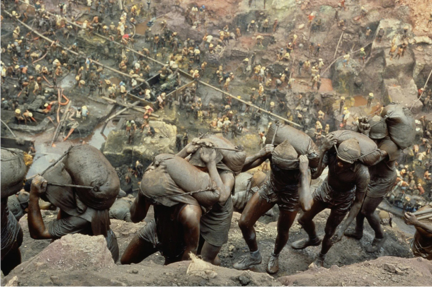
Alex Scollay (New Zealand) / Corentin Derbré (France) / Jevon Chandra (Singapore) / Yanyun Chen (Singapore), In times like these…, Supported by the National Arts Council Digital Presentation Grant, Duration 8 minutes 27 & seconds, 2021
The video in times like these... is an immersive cinematic and VR presentation that developed from a previous collaboration between the artists. In times like these... speaks to the strange times we live in, where the expressions of our senses are locked in deep isolation, where the abstract pulsates vividly in our cognitive presences, where intricate movements of color, light and sound turn up their volumes, such that we are inundated by their slowly inching wilt towards death. The VR experience is one of slow-motion aesthetic implosions, that a viewer melts into the virtual at the eye of the cascading storm.
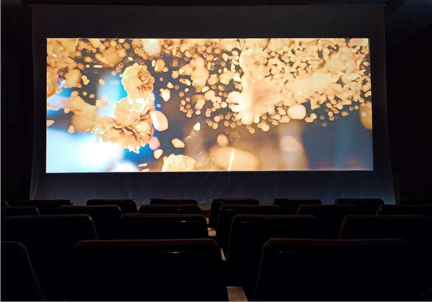
Bill Psarras (Greece), To Face a Surface is to Surface a Face, Performance for camera, plaster, fabric, water, Full HD video, Duration: 20 minutes & 19 seconds, 2021
The artist uses human hands as a metaphor for separation, meeting, burial, excavation, and reconstruction. The performance explores the process of reveal, its materials, the change of state, the fracture as evolution. The work focuses on the sense of touch and uses gestural themes from ancient tombs. Hands serve as a meeting place for intention and re-creation, revealing both a farewell and meeting, bringing past and future forms into a silent dialogue.
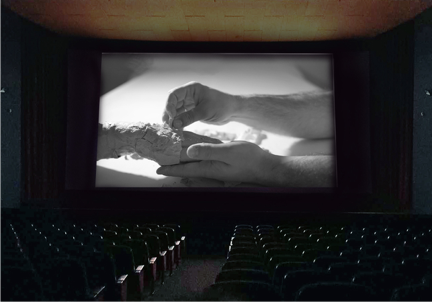
Constantinos Taliotis (Cyprus), Blast, 2022
Taliotis though Blast, a video series of quarry blasts, explores existential perspectives on land degradation and the paradoxical relation between spectacle and melancholy, and raises questions about guilt and responsibility in witnessing catastrophes in the Anthropocene era.
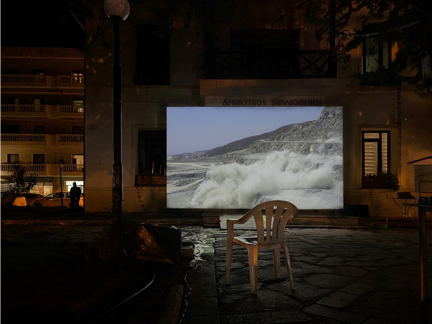
Filippos Tsitsopoulos (Greece), Who will Make the History of Tears, Performance, 2024
With the use of masks as a form of protection, disguise and resilience, Tsitsopoulos’ work explores the duality of authentic and performed identities. For the Carbon Tierra Biennale, he is presenting a performance on tears, expressing the idea we are the inhabitants of a strange corner of the universe spinning in the middle of a vast disorder, of a game with rules never explained to us, therefore we can start over without grief or fear. The Carbon Tierra Biennale will also feature the screening of Filippos Tsitsopoulos Hamlet/Chapter 4 (2022).
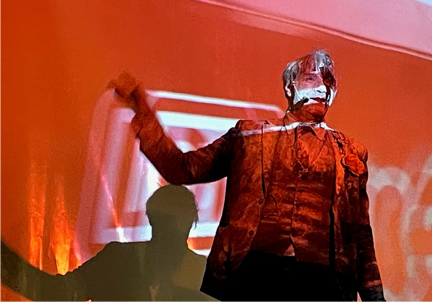
Gözde Mimiko Türkkan (Turkey), Earth Fight, Video, 4K video, sound, 3 Ed. + 1 A.P, Duration: 4 minutes & 52 seconds, 2022
Türkkan confronts her vulnerability and animosity towards the burned lands of the Aegean coast in southern Turkey, highlighting the link between natural fires and the Anthropocene. Türkkan’s video reflects the human attitude of causing damage to everything we should take care of, highlighting the broken balances and open wounds of humanity. The artist’s gesture of anger and helplessness reveals the consequences of human actions and the open wound of humanity as the more we destroy the land, the more we destroy ourselves.

Jim Hobbs (USA/UK), Black Sun, 16mm film transferred to digital, additional sound by Rie Nakajima, Duration: 15 minutes & 36 seconds, 2012
Black Sun visual imagery directs a pensive and concentrated gaze at the sun itself, forming a type of melancholic and abstract environment. The notion of staring at the sun has been linked throughout history with ideas of insanity, mortality, and depression, as such this act describes the desire to overcome rational thinking and to lose oneself in a temporal paralysis of vision and mind. Shot in various locations, including Death Valley, the film (and filmmaker) turns this act (to look towards the sun) to an intentional performative gesture, capturing the sun’s strength and enigmatic beauty through a 16mm camera as it burns its image onto the film. While the gaze of the film is often upwards, the grounding sites/locations here are desolate places where mining and human activity is now mostly muted, moving away from the portrayal of a locational identity and replacing “place” with a psychological state created by the sun and its effects.
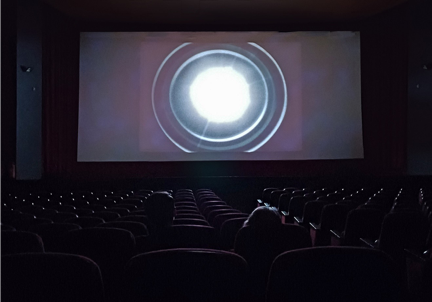
Kalle Brolin (Sweden), I am Unquenchable, Camerawork and postproduction by D.ο.P. Alex Germundsson. Actors in the video: Lola Marin, Majken Wetterstrand, Rosa Wetterstrand, Li Germundsson and Lisa Brolin, 2021
The video depicts children being lowered into a dark mining shaft. The work came about during studies into the history of child labor in the mining villages in Scania, in the south of Sweden. The mining company attempted to breed workers suitable for underground work by taking children from unwed mothers in cities and placing them in a company-controlled care home. These children later had children destined for mining work. Strikes erupted, leading some miners to emigrate to America. One of these miners discovered he had fathered a child by a woman left in the village and wrote a letter to his unborn child, urging them to light an unquenchable flame against tyranny.
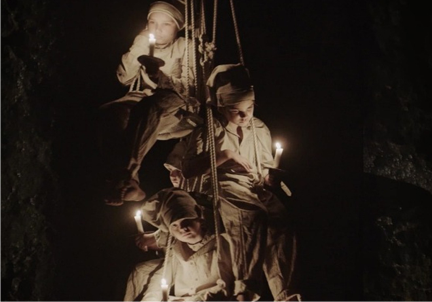
Klitsa Antoniou (Cyprus), Never Mine, video, editing Christos Andreou, Duration: 13 minutes & 16 seconds, 2016
In the video Never Mine, two parallel but opposing narratives run side by side as a single historical reality. The first narration starring the director of the Cyprus Mines Corporation (from 1923 to 1925) at the Mines of Skouriotissa, Charles F. Jackson presents a detached and factual account, through the voice of his grandson W. J. Everett, who reads the original written diary of his grandfather. In this narrative we follow an account, free from any emotional charge for the human suffering that the extraction of the minerals entailed. The second narration is by a miner, Pantelis Varnava. The actual voice of Pantelis Varnava from a documentary film of the Pancyprian Federation of Labour “Miners Memories”, reveals the tragedy, human suffering, and often the demise of the miners in the depths of the earth as well as the relentless exploitation of its resources. The Carbon Tierra Biennale will also present the work/performative march of Klitsa Antoniou, Coalworks.
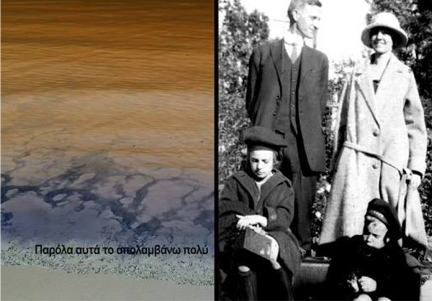
Lara Salmon (USA), apliki Cu, video, Duration: 7 minutes & 17 seconds, 2021
Lara Salmon and her mother created the performance film apliki Cu in Cyprus in 2021 as an expression of intergenerational sorrow for the abandoned Apliki copper mine. They acknowledge their ancestors opened the mine 100 years ago and hope for environmental rehabilitation through acid balance and tree planting. The film was part of the exhibition Under/Mining (Cyprus 2022). During this exhibition Lara also performed Mines, inviting the audience to brand Cyprus’s nineteen mines onto her back. Once Salmon’s partner, Vanessa Dahbour, traced the island’s outline, onlookers placed red hot iron rods upon her skin to mark the locations of the mines.

Lara Salmon (USA) / Vanessa Dahbour (Palestinian/Native American), CA(PA)BLE OF POWER, Live Performance, 2024
Following Mines (2022), which initially occurred in Kalavasos (Cyprus), as part of the exhibition Under/Mining, Salmon’s partner Dahbour joins her to deepen the conversation around resource exploitation in the region without adequate compensation to the environment and indigenous populations. Dahbour, half Palestinian and half Native American, uses her blood to trace the planned map of the EuroAsia Interconnector, the world’s longest and deepest underwater power cable, across Lara’s body, highlighting the injustice of this endeavor without consideration of indigenous people.
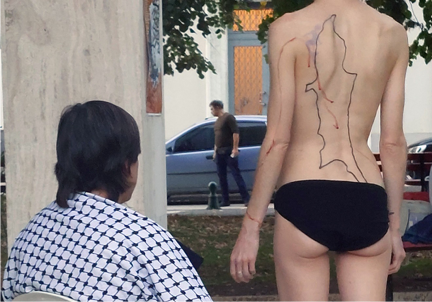
Maayan Amir (Israel) / Ruti Sela (Israel), Therms and Conditions, Duration: 1 minute & 33 seconds, 2022
Thermal imaging units are non-contact devices that may be used to harness body-heat radiation at the service of target-identification systems. A way to avoid detection of the device is to blend with another heat source. The following intervention was created using a thermal imaging unit when the artists loitered on the streets on a winter night and asked strangers to help keep warm.
https://exterritory.wordpress.com/
https://forensic-architecture.org/about/team/member/maayan-amir
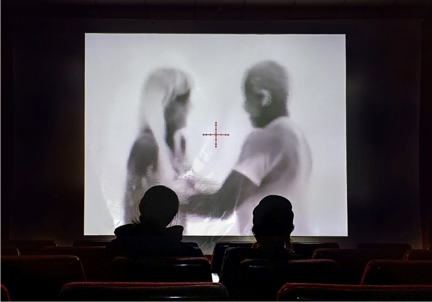
Maria Trillidou (Cyprus), EON, Editing: Aias Demetriou, Duration: 3 minutes & 40 seconds, 2024
Maria Trillidou’s EON reflects on metamorphic forces and terrestrial occurrences over a vast amount of geological time. Among eruptive magma, a gaseous ocean of nitrogen-hydrogen-carbon-oxygen, matter oscillations and photosynthesis, the Earth is emitting a pulsating vibration. This palpitating impression is a metaphor for planetary ‘breath’ that throughout the video is suggestive of a miner’s respiratory rhythm entraining with that of the Earth.
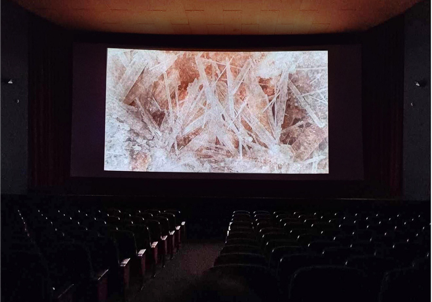
Melita Couta (Cyprus), Kappakli, a video art performance by Melita Couta, Duration: 6 minutes & 50 seconds, 2022
Kappakli refers to an enamel food container traditionally used by the miners in Cyprus to transport their food to the mines. Following extensive research on the daily lives and history of miners in Cyprus, Melita Couta recreates two sets of ceramic “Kappakli” by collecting earth, argyle, stones and minerals from the abandoned mines of Kalavasos in Cyprus. The video captures the process/ ritual of the artist as she produces clay snd eventually returns these ceramic objects as “offerings/tamata” back at the mines. The ceramic containers whilst being symbolic objects of nurturing and nourishing the miner’s bodies with the intervention of the artist become signifiers of the earth’s toxicity, the ecological disaster and health hazards inflicted on the miners during their labour.
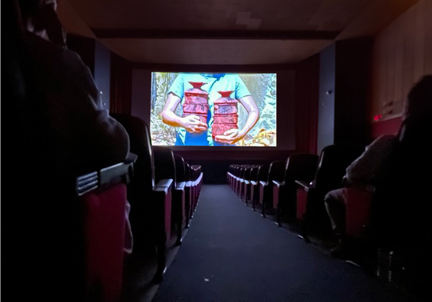
Monika Moteska (N. Macedonia) / Robert Jankuloski (N. Macedonia), Landscape Experience, video installation, 16:9, D.o.P.: Robert Jankuloski, Editing: Blazhe Dulev, Sound Design: Darko Spasovski Packi, Duration: 8 minutes, 2022
Landscape Experience by Jankuloski and Moteska is a multinational trans tactical project, which through a critical-discursive approach, points out the dangers that lurk if serious systemic steps are not taken to overcome the greatest of the Anthropocene, which are a tax on capitalism and government policies, the uncontrolled misuse of the natural resources of the planet Earth in the form of mindless wars (explicit or implicit, real or psychological, physical or chemical) in the name of someone’s ideals, in which we are all victims, and most of all the youngest, the innocent and the idealists.
https://msuv.org/en/robert-jankuloski-monika-moteska-iskustvo-pejzaza/
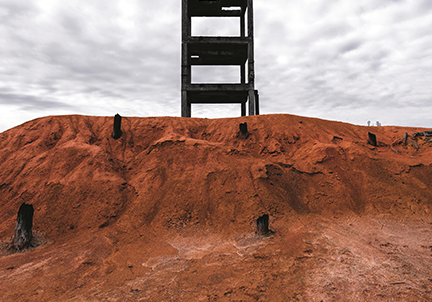
Narcisa Hirsch (Argentina) / Robert Cahen (France) / Rubén Guzmán (Argentina), Kosmos: the Uncertainty, Editing: Clara Frias / Helmut Corcoba, Music: André Bon / Franck Yeznikin / Tomomi Nozawa, Sound design: Narcisa Hirsch / Ruben Guzmàn / Robert Cahen, Duration: 9 minutes & 25 seconds, 2018
Various elements in the video delve into the concepts of uncertainty and fluidity, symbolizing our essential humanity and perpetual state of evolution. The video investigates surfaces and visual perception, pertinent to water, rivers, and amniotic fluid, which have the capacity to change their form, refractive properties, and travel both above and below surfaces. Deeply influenced by Narcisa Hirsch, all three artists explore the untamed landscapes of Patagonia, where they seek inspiration in the open ocean as a means of self-reflection and artistic expression. Crucially, the Earth’s vulnerable and delicate nature is communicated.
https://www.moma.org/calendar/events/9311
https://hammer.ucla.edu/radical-women/artists/narcisa-hirsch
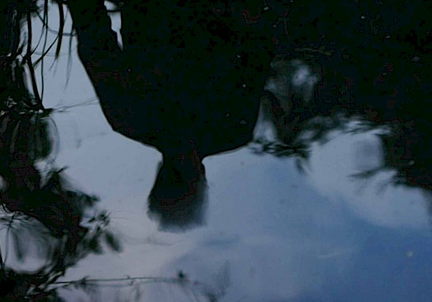
Niamh O’ Malley (Ireland), Quarry, HD Dvd projection, Duration: 9 minutes & 56 seconds, 2011
The filmic structure of Quarry explores an Irish limestone quarry, examining its duality as both a physical site and a non-site, built of displaced matter. Quarries have a unique energy, acting as monumental ruins for the monuments they have built. The quarry’s image is produced in response to the site’s geology, creating a negative solidity with holes that never end. A series of textured and colored glass filters and black surfaces were placed in front of the camera to physically intrude upon, distort, and reveal the sharpness of the cut white limestone. The protection of distance from the subject is periodically collapsed in a rhythmic arrangement of real-time shots.
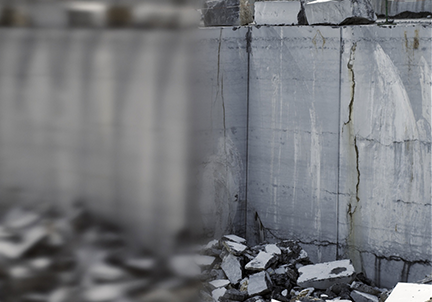
Oliver Ressler (Austria), Carbon and Captivity, 4K video, Duration: 33 minutes, 2020
Carbon capture and storage (CCS) is presented by fossil industries as technofix to prevent climate breakdown. The idea is to extract carbon dioxide in the refinery process and to transport and store it in sub-seabed formations. But CCS remains a relatively immature technology: investigations in 2013 showed cracks in North Sea seabed rocks where carbon was stored in field tests. The film was recorded at the world’s largest facility for testing carbon capture technologies, at the Technology Centre Mongstad in Norway, a joint venture between the Norwegian state, Equinor, Shell and Total. The large-scale introduction of CCS would delay the necessary decarbonization, deepening our dependence on the fossil fuel industry. The film’s title refers to humanity’s “captivity” within the logic of capitalism, which seems to carry extractivism onward to the point of no return.
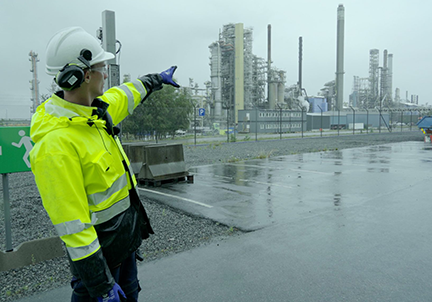
Oscar Lara (Peru), Searching for Power on the Collective Laugh, (extract), 2024
Searching for Power on the Collective Laugh is a project in Lima, Peru, that uses street comedy as a tool to normalize new information and help accept changes in society. The project, led by Lara, aims to train street comedians on the illegal gold mining reality in the Peruvian jungle, which includes issues like slavery, child prostitution, Amazon poisoning, and drug trafficking. The narrative moves between downtown Lima and the rural mining community of Puerto Maldonado in Madre de Dios. The film, The Adventures of Chuchupe, documented a street comedy act at the San Martin Square (Lima) in 2018. The comedy material was the result of a one-year-long collaboration between Lara, street comedians, anthropologist Gabriel Arriarán, biologist Antonio Fernandini, and Theatre of the Oppressed practitioner Ricardo Galvez, aiming to explore the complex relationship between the Peruvian state and the mining industry.
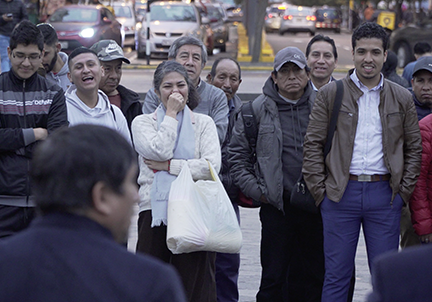
Robert Cahen (France), Voyage d’hiver, Video, single channel, color, sound. With the collaboration of: Angela Riesco. Music: Christine Groult. Sound design by Robert Cahen, Duration: 18 minutes & 01 seconds, 1993
Robert Cahen’s work explores the imaginary, presenting metaphoric voyages of time, place, memory, and perception. His work is characterized by sophisticated electronic techniques that manipulate sound, image, space, and temporality, resulting in subtle transmutations of the illusory and the real. In Voyage d’hiver, Cahen’s winter journey to Antarctica is depicted as a cold, alien-like place. The images, including glacial expanses, bluish ice blocks, ghostly boats, and ghostly characters, are reworked to form a new, abstract, and sometimes disturbing prophetic universe.
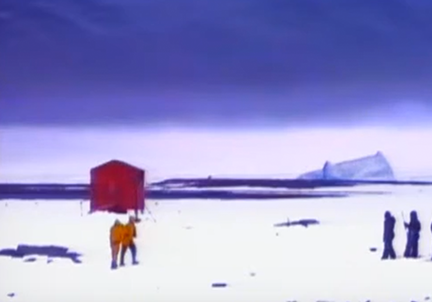
Trevor Borg (Malta) / Vince Briffa (Malta), Taħt | Fuq, two-channel video and audio loop, Duration: 8 minutes, 2021
Taħt | Fuq explores underground structures in Malta and Gozo with the use of video, animation, and data digitisation to create a multi-media installation that challenges the way we perceive the world and its existence. It investigates the excavation of rock structures by locals for various reasons, both lawful and illegal. The work reflects on the environmental impact of mining activities, the scarring of the landscape, and the allure of underground structures. The installation features catacombs and underground war shelters aiming to transport and re-dimension the visual and aural experience of being both overground and underground in these spaces. The multimedia strategy contextualizes the historical, sociological, and philosophical aspects of the work, bringing about new possibilities for experiencing space and place.

Next Project
Carbon Tierra Biennale 1 | Conference

